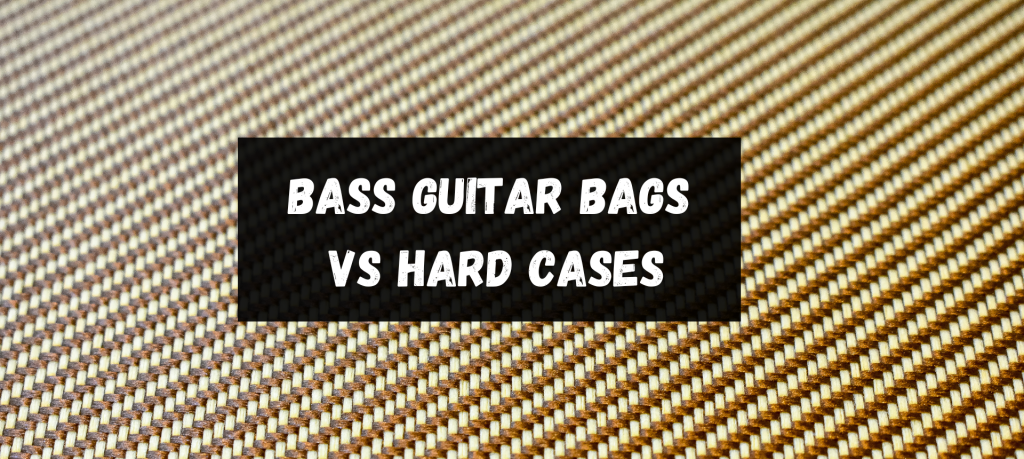August 23, 2023
Howard
Psychedelic Rock is a musical genre originating in the 1960s, characterised by its expansive and experimental soundscapes, surreal lyrics, and an emphasis on creating an immersive auditory experience. It often incorporates unconventional instruments and effects, drawing inspiration from mind-altering experiences to challenge the listener’s perceptions. Emerging mainly from the UK and the US, it became the soundtrack for a generation seeking spiritual and artistic enlightenment.
In the heart of the swinging ’60s, from the bustling lanes of Camden to the iconic Sunset Strip, a musical genre was taking root, one that would challenge conventions and redefine the very essence of rock ‘n’ roll. So, buckle up, dear reader; we’re about to embark on a mesmerising trip through time, and you won’t want to miss a beat.
The Psychedelic Aesthetic: Defining Features
From its very onset, psychedelic rock was as much about a mood and a movement as it was about the music itself. With the 1960s setting the stage, this genre, born of uninhibited experimentation, ushered listeners into unknown realms. To fully appreciate its essence, one must grasp its core elements that create the quintessential psychedelic sound together.
Understanding Psychedelia: Soundscapes and Sensibilities
The world of psychedelia is a compelling mix of the otherworldly and the profound, intertwined to form an auditory experience as complex as it is clear. At its core, it’s an exploration — an invitation to venture beyond the conventional and uncharted depths.
- Sonic Adventures: Delving into Sound Effects: Psychedelic rock is characterised by its pioneering use of sound effects. From the echoey reverberations of delay pedals to the warping magic of a phaser, these effects created layers of sound that took listeners on a journey, wrapping them in a rich auditory tapestry that often felt otherworldly.
- The Art of the Unexpected: Instrumental Innovations: It wasn’t just about the electric guitar. Instruments like the sitar, theremin, and Mellotron frequently appeared, weaving Eastern melodies and futuristic sounds into tracks. Such instrumental innovations gave the genre a distinctive, unpredictable edge, consistently surprising and intriguing its audience.
- Spontaneity and Freedom: The Role of Improvisation: One of the hallmarks of psychedelic rock is its embrace of improvisation. Bands often diverged from the scripted, diving into spontaneous jam sessions that breathed life and energy into their performances. This sense of freedom, of being unshackled from the conventional structures of songwriting, was a testament to the genre’s ethos.
- Lyrics Beyond Reality: The Surreal Themes: Diving deep into the human psyche, the songs in psychedelic rock often explored themes of existentialism, spiritualism, and altered states of consciousness. They beckoned listeners to ponder deeper truths, blurring the lines between reality and fantasy, grounding and ethereality. It was, and remains, a musical form that encourages introspection and a broader understanding of the universe.

Sonic Milestones: Essential Psychedelic Tracks
Psychedelic rock, with its rich tapestry of sounds and sensibilities, has given us some of the most iconic tracks in music history. These tunes, with their transcendent harmonies and profound lyrics, have topped charts and profoundly influenced subsequent generations of musicians. They are the beacons of a bygone era, yet their allure remains timeless.
Chart-toppers and Trailblazers
While just the tip of the iceberg, these particular tracks have undeniably shaped the landscape of psychedelic music. They encapsulate the ethos of the ’60s and ’70s and highlight the genre’s sheer range, from the ethereal to the explosive.
- “Strawberry Fields Forever” and the Beatles’ Explorations: Taking a departure from their pop roots, The Beatles embarked on a psychedelic journey with “Strawberry Fields Forever.” John Lennon’s reflective lyrics and innovative studio techniques marked a transformative era for the band and the genre.
- Grateful Dead’s Iconic “That’s It for the Other One”: The Grateful Dead, often synonymous with improvisational jams, gifted us with “That’s It for the Other One.” With its intricate instrumentals and layered harmonies, this track perfectly encapsulates the band’s ability to weave tales through their tunes.
- The Power of “Purple Haze” by The Jimi Hendrix Experience: Few tracks exude the raw power of “Purple Haze.” With Hendrix’s blistering guitar work and his distinctive vocals, this track showcased his unparalleled artistry and cemented his position as a psychedelic rock demigod.
- The Doors’ Timeless “Light My Fire”: With its haunting organ intro and Morrison’s evocative vocals, “Light My Fire” by The Doors is a masterclass in building musical tension. The track’s hypnotic rhythm and poetic lyrics make it an enduring favourite among fans and critics.
- Pink Floyd’s Ethereal “Interstellar Overdrive”: Taking listeners on a cosmic journey, “Interstellar Overdrive” is a testament to Pink Floyd’s prowess in creating immersive soundscapes. The instrumental track, renowned for its experimental bent, showcases the band’s commitment to pushing musical boundaries.
- The Captivating “Sunshine of Your Love” by Cream: Eric Clapton’s mesmerising guitar riffs and Jack Bruce’s soulful vocals made “Sunshine of Your Love” a staple in the psychedelic canon. With its bluesy undertones and memorable bass line, the track exemplifies Cream’s unique fusion of styles, which left an indelible mark on the rock scene.
Legendary Torchbearers: Leading Psychedelic Bands
From the surreal landscapes painted by their tracks to the boundary-pushing stage performances, psychedelic bands have been the lighthouse guiding rock enthusiasts into uncharted waters. Their influence resonates even today, as modern bands continue to draw inspiration from their groundbreaking work.
Masters of the Craft
While numerous bands dabbled in psychedelic rock, a select few stand out for their transformative influence on the genre. Their innovative approaches to music and performance made them legends, forever imprinted in the annals of rock history.
- The Jimi Hendrix Experience: Reshaping Rock’s Edges: Fronted by the virtuoso guitarist Jimi Hendrix, this trio was revolutionary. Their fearless experimentation with feedback, distortion, and effects like the wah-wah pedal paved the way for future rock musicians. Songs like “Voodoo Child” and “Purple Haze” are testaments to their innovation, proving that the boundaries of rock were made to be pushed.
- Pink Floyd: Masters of Auditory Illusions: Pink Floyd mastered creating intricate auditory tapestries and is synonymous with psychedelic grandeur. Albums like “The Dark Side of the Moon” and “Wish You Were Here” showcase their knack for combining enigmatic lyrics with multi-layered instrumentals, creating an immersive experience long after the last note.
- Grateful Dead’s Pioneering Spirit: Hailing from San Francisco, the Grateful Dead weren’t just a band but a cultural phenomenon. Known for their extensive improvisational jams and devoted fanbase, the “Deadheads”, the Grateful Dead’s concerts were less like traditional gigs and more like communal musical journeys.
- The Doors: Vanguards of Dark Psychedelia: With Jim Morrison’s brooding lyrics and Ray Manzarek’s haunting keyboard, The Doors carved a niche in darker, more introspective realms of psychedelia. Tracks like “Riders on the Storm” and “The End” exemplify their ability to explore the shadowy corners of the human psyche through music.
- Cream: A Fusion of Blues and Psychedelia: Comprising Eric Clapton, Jack Bruce, and Ginger Baker, Cream’s sound blended blues roots with psychedelic flourishes. Their jams, like “White Room” and “Crossroads”, highlighted their exceptional musicianship and showcased the synergy of blues and psychedelic rock.
Time-travelling: The Evolution of Psychedelic Rock
Psychedelic rock’s meteoric rise and evolution through the decades is an enthralling journey, richly imbued with cultural shifts and technological advancements. From tentative steps in the 60s to its resounding echoes in modern music, this genre has been the backdrop for a generation’s search for meaning, identity, and consciousness.
The Sixties Soundscapes
The 1960s, a decade synonymous with change and upheaval, witnessed the blossoming of psychedelic rock. The era’s music painted vividly hallucinogenic canvases, taking listeners on unparalleled auditory adventures.
- The Beatles’ Transformation and “Revolver”: While The Beatles began their journey as a pop-rock band, they soon embraced the psychedelic movement with gusto. “Revolver” is a testament to their transformation, with tracks like “Tomorrow Never Knows” breaking away from traditional song structures, heralding the band’s experimental phase.
- San Francisco’s Hazy Days: San Francisco became the epicentre of the psychedelic movement, with the Summer of Love in 1967 standing as its zenith. Bands like Jefferson Airplane and The Grateful Dead gave voice to the city’s free spirit, with Woodstock as the movement’s crowning moment.
- Los Angeles and the Psychedelic Dream: On the other side of California, Los Angeles saw bands like The Byrds and Love fusing folk-rock with psychedelia, creating a sun-soaked dreamy sound, reflective of the city’s laid-back vibes and shimmering horizons.
- London’s Energetic Underground Scene: London’s underground scene pulsated with energy across the pond. Bands like Pink Floyd and The Soft Machine redefined live performances with their light shows and extended jams, turning concerts into mesmerising, kaleidoscopic experiences.
- Innovative Recording: Embracing the Studio as an Instrument: The studio itself became a vital tool for innovation. Groundbreaking techniques, from phasing to reverse recording, were employed by bands and producers alike, turning albums into auditory masterpieces. This era was where the studio wasn’t just for recording—it was an instrument in its own right.
Neo-Psychedelia: The Legacy Continues
The fire of psychedelia was far from extinguished as the 70s began. With bands like Tame Impala and The Flaming Lips, psychedelic rock morphed and thrived, cementing its legacy in the annals of rock history and proving its timeless appeal.
Global Psychedelia: A Glimpse Beyond Borders
From the vibrant venues of San Francisco to the bustling clubs of London, psychedelic rock’s tendrils spread rapidly across the globe, deeply influencing generations of musicians and listeners alike. This rich tapestry of sound wasn’t limited to any one corner of the world; it became a global phenomenon, resonating with diverse cultures and societies.
U.S. and the Psychedelic Eruption
The United States, particularly its West Coast, was the ground zero for the psychedelic explosion. San Francisco’s Haight-Ashbury became synonymous with the movement, fostering bands like Jefferson Airplane and The Grateful Dead. Beyond this hippie haven, cities like New York and Los Angeles nurtured their own unique brands of the genre, blending it with folk, jazz, and the blues. Iconic events like Woodstock and the Monterey Pop Festival were not just music gatherings but cultural landmarks, a testament to the genre’s profound impact on American society.
Britain’s Sixties’ Psychedelic Revolution
Over in Britain, the sixties witnessed a parallel and equally fervent psychedelic surge. London became a hotspot for psychedelic experimentation, with venues like UFO Club hosting legendary acts like Pink Floyd. The British flavour of psychedelia blended rock with a hint of the country’s rich musical heritage, from folk to the blues. The Beatles, with albums like “Sgt. Pepper’s Lonely Hearts Club Band”, epitomised this fusion. But it wasn’t just the giants of the industry; lesser-known bands like The Pretty Things and The Soft Machine played pivotal roles in shaping the unique character of British psychedelia.

Reflections and Modern Reverberations
As with all tremendous musical movements, psychedelic rock echoes continue reverberating through time, influencing subsequent genres and artists. Though its golden age might be situated in the sixties, the influence and spirit of psychedelic rock is far from dormant. It has morphed, blended with other genres, and found resonance with new generations of artists and listeners.
Influence on the Contemporary Music Scene
The modern music scene owes a significant debt to psychedelic rock pioneers. Elements of psychedelia can be found permeating various genres, from indie rock and dream pop to certain strains of electronic music. The genre’s hallmark traits – expansive soundscapes, introspective lyrics, and inventive use of instrumentation – have left indelible marks on contemporary music. Bands like Tame Impala and MGMT have imbibed and reinterpreted the psychedelic ethos for the 21st century, showcasing its enduring appeal.
Today’s Psychedelic Resurgence and Artists
In recent years, we’ve seen a distinct resurgence of interest in psychedelic sounds. A new generation of artists, drawing inspiration from the genre’s rich history, are forging their psychedelic paths. King Gizzard & the Lizard Wizard, with their prolific output and genre-blending approach, stands out as a prime example. Similarly, artists like Pond and Temples blend traditional psychedelic motifs with modern sensibilities. This resurgence isn’t just a mere nostalgic trip; it’s a testament to psychedelic rock’s timeless allure and adaptability.
Conclusion
The rich tapestry of psychedelic rock, with its kaleidoscopic sounds and transformative themes, has woven itself indelibly into the fabric of global music culture. From its inception in the turbulent sixties to its modern-day reimaginings, its sonic signature has influenced artists across genres and continents. But beyond its musical footprints, what makes this genre perpetually compelling?
At its core, psychedelic rock has always been about exploration — of sound, consciousness, and the boundaries of musical convention. It provided an avenue for listeners and artists alike to transcend the mundane, challenge the status quo, and embrace the unknown. While its initial heyday might have been rooted in the cultural and social revolutions of the 1960s, its principles remain universally relevant. In an ever-evolving world, the allure of a musical form that champions innovation, introspection, and boundless creativity remains undiminished. The journey of psychedelic rock, it seems, is far from over, and its enduring appeal promises to inspire and enchant future generations of music lovers.
Have you ever wondered, what is rock music?
Go On!

Howard Head
I turn confused bass enthusiasts into bass gods through a simple and logical process.

















